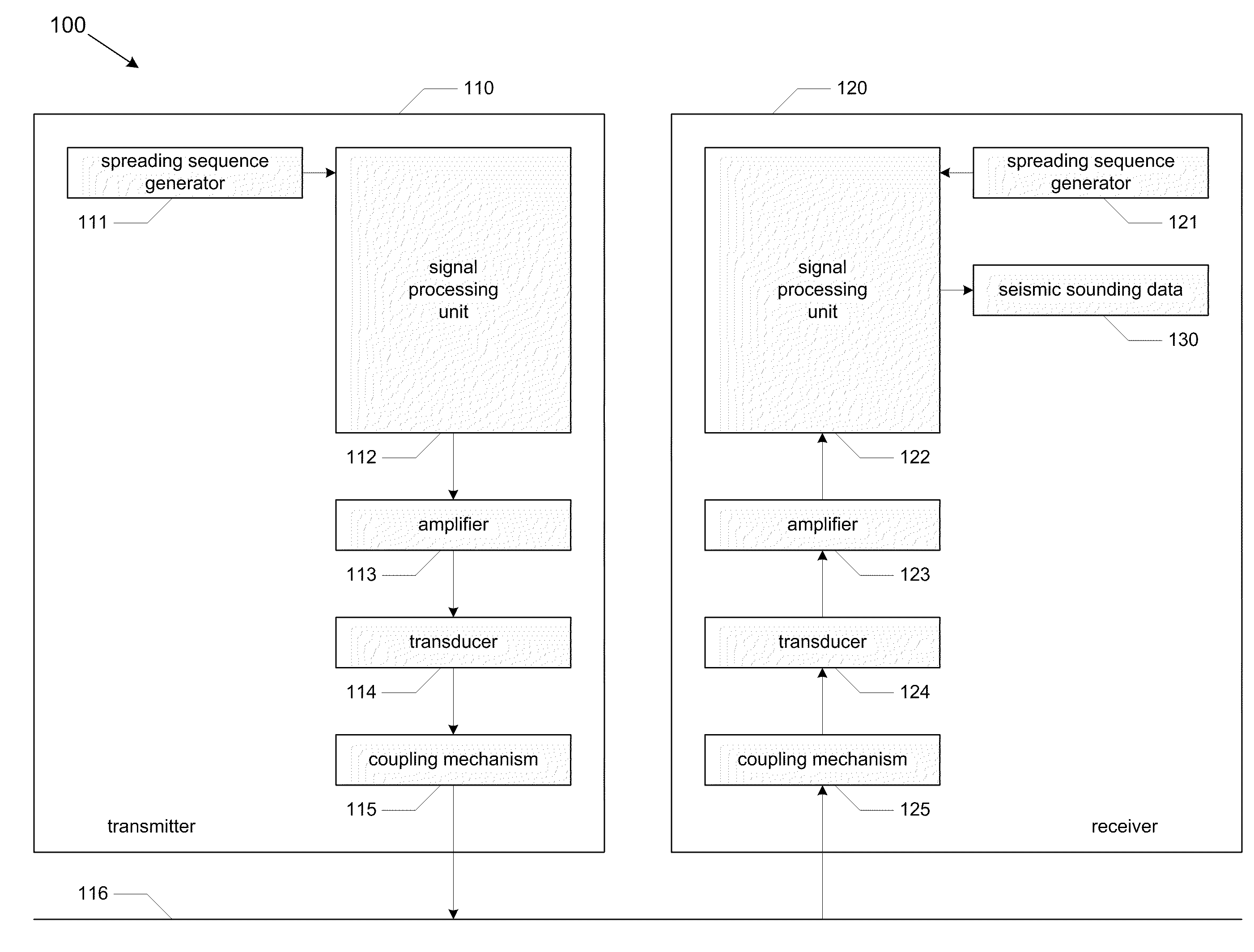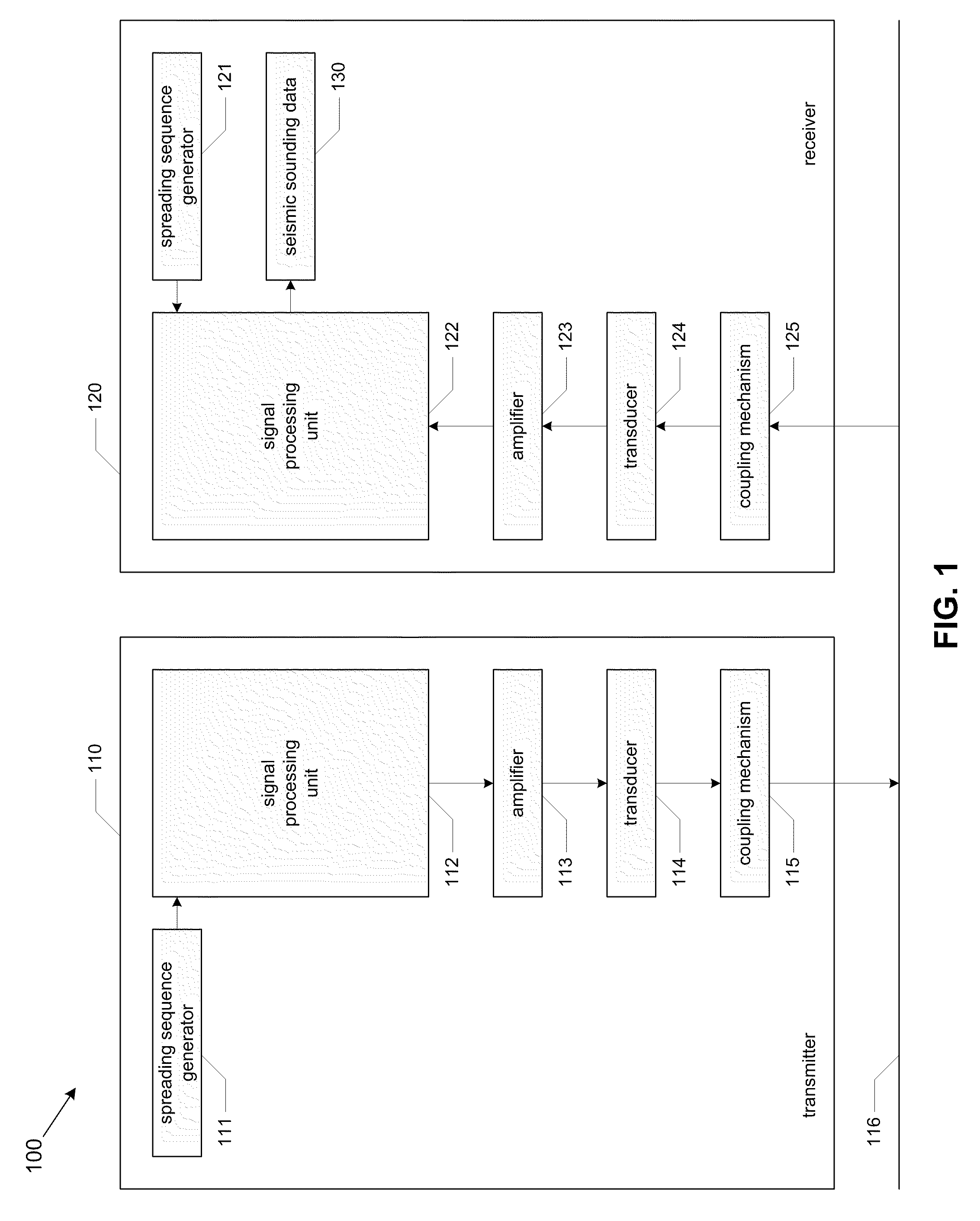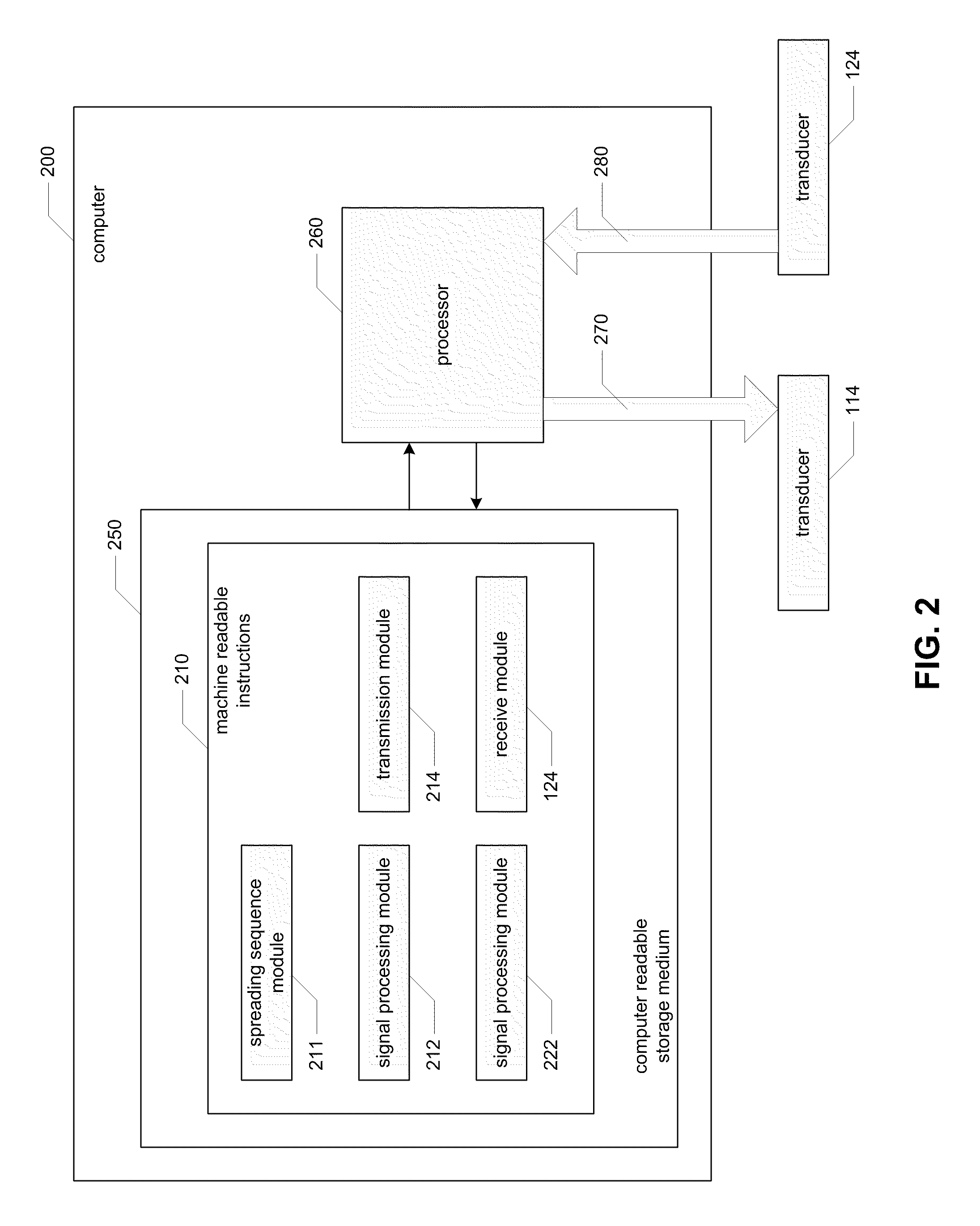System and method for seismological sounding
a seismological and sounding technology, applied in the field of seismological sounding systems and methods, can solve the problems of large equipment that is not convenient to transport to a sounding location without specialized vehicles, large equipment that is not convenient to transport, and large energy inputs, etc., to achieve the effect of increasing the signal-to-noise ratio (snr), reducing the number of noise, and less cumbersome transportation
- Summary
- Abstract
- Description
- Claims
- Application Information
AI Technical Summary
Benefits of technology
Problems solved by technology
Method used
Image
Examples
example
[0074]An embodiment of the above described seismic sounding systems and methods was used to perform a seismic survey at the South Juanita Mine adit in the Magdalena Mountains. The embodiment used to perform the seismic survey described comprised an AudiSource Amp5.3 amplifier coupled to a Clark Synthesis TST429 Platinum transducer, GeoSpace GS-100 geophones, an IOTech Personal DAQ 3001, and a Dell Latitude D620 laptop computer. The transmitter is a commercially available amplifier and a low-power audio transducer, and the receiver is a commercial single-axis geophone. The transmitter and laptop were powered by a Black and Decker PI750AB power inverter plugged into the field vehicle. The transmitter was coupled to the ground via a small steel stake hand driven with a hammer, and the single geophone was moved to measured offsets.
[0075]The following computer code, which is written in C++, can be used to control I / O and to perform signal processing, as described above, with regard to pe...
PUM
 Login to View More
Login to View More Abstract
Description
Claims
Application Information
 Login to View More
Login to View More - R&D
- Intellectual Property
- Life Sciences
- Materials
- Tech Scout
- Unparalleled Data Quality
- Higher Quality Content
- 60% Fewer Hallucinations
Browse by: Latest US Patents, China's latest patents, Technical Efficacy Thesaurus, Application Domain, Technology Topic, Popular Technical Reports.
© 2025 PatSnap. All rights reserved.Legal|Privacy policy|Modern Slavery Act Transparency Statement|Sitemap|About US| Contact US: help@patsnap.com



